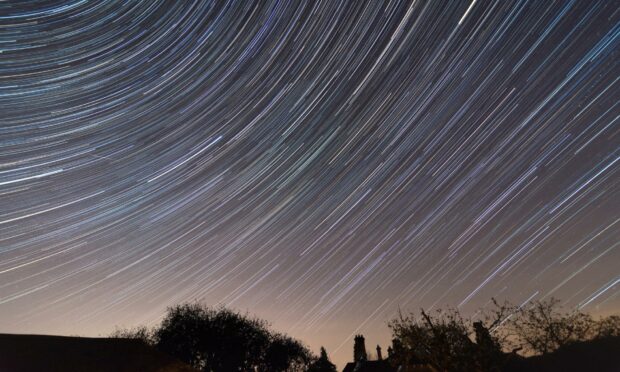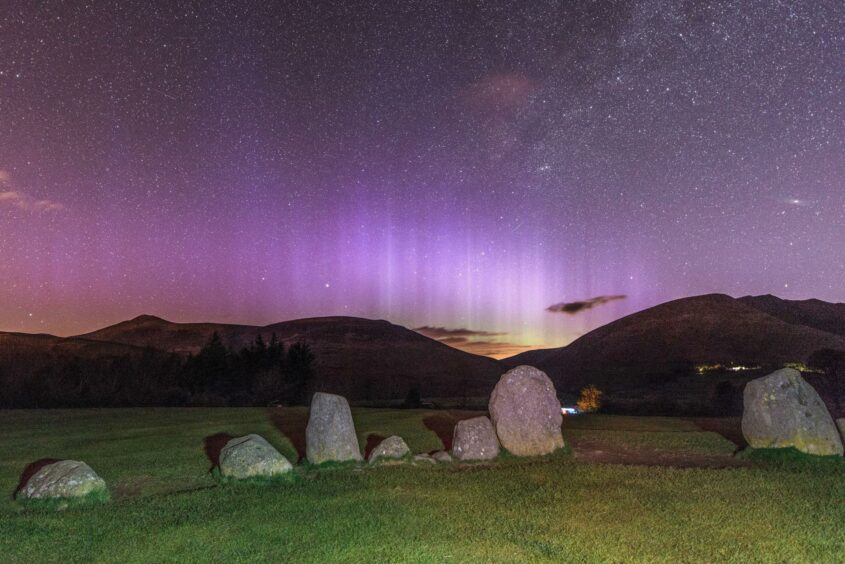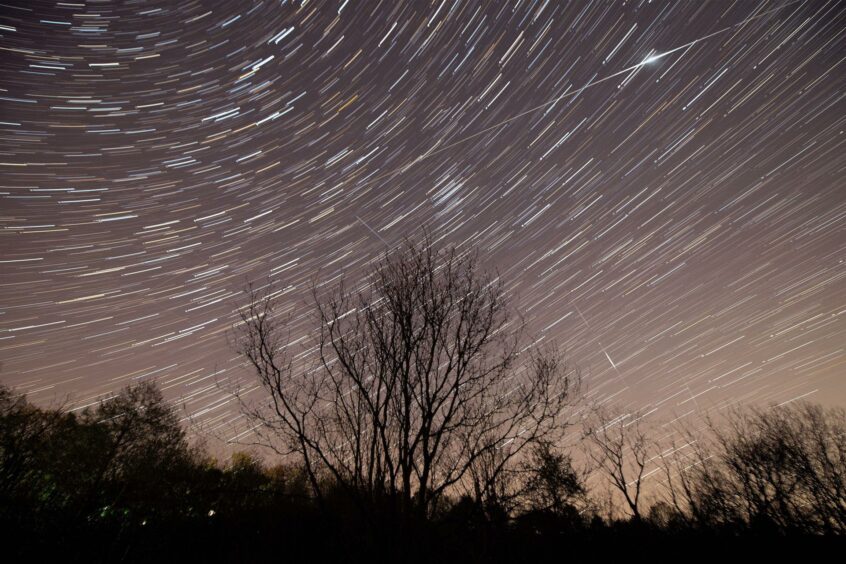The annual Lyrid meteor shower is due to peak across Scotland’s skies tonight, but how can you get the best chance of spotting it?
Stargazers across the north and north-east can hope to see the night sky lit up with shooting stars.
This celestial event is one of the major meteor showers of the year, and is also the oldest one recorded by mankind.
It takes its name from the constellation of Lyra as this is where the shooting stars appear to originate from.
Pieces of debris known as meteorites, falling from the Thatcher Comet, will enter Earth’s atmosphere at speeds of around 43 miles per second, burning up and causing the streaks of light we know as shooting stars.
Torcuill Torrance, a committee member from Aberdeen Astronomical Society is on hand to tell you how to make sure you get the best chance of spotting the Lyrid tonight.
What might I see?
Experts have estimated that stargazers might see as many as 18 shooting stars per hour as they Lyrid gets into full force.
This year’s shower started on April 14 and is due to continue until the end of the month, but its peak is expected to be on the nights of April 22 and 23.
Mr Torrance caught some shooting stars on his camera last night but is hoping for more this evening.
He said: “The weather is looking pretty good, nice clear skies at the moment although that can change very quickly.”
Where can I see the Lyrid?
Much with the Northern Lights, anyone hoping to spot tonight’s Lyrid should head to dark areas with as little light pollution as possible.
Mr Torrance’s best advice was not to look in the direction you might expect.
“The constellation of Lyra, or the harp, is pretty much due north at about 10pm,” he explained.
“You might think it’s a good idea to look towards the constellation but you’re actually better looking about 90 degrees away from there, so rather than looking north, look east or west.
“That way, rather than coming straight towards you which would be a very short meteor track, they’ll actually streak across the sky so you’ll see a much longer trail in the sky.”
He suggested areas including Balmedie, Alford and Netherley. In the Highlands, coastal and remote areas should provide the best chance of a good view.
When can I see the Lyrid?
The best time to see the Lyrid is from around midnight into the early hours of Saturday morning.
Mr Torrance said the people who would get the best show would be those who were patient, and wrapped up warm.
He said: “I would recommend that people get some nice warm clothing and get what I would call a moon lounger, what most people would call a sun lounger, and just sit.
“The best time to spot Lyrids is around about midnight. It’s getting quite bright by around 3.30am so if you’re keen then you should set up your camp at around 10pm then carry on.”
How do I take photos of the Lyrid?
Meteor showers are hard to capture on a phone camera because of how fast they move across the sky, but Mr Torrance said if you keep it still you might just get lucky.
To get the best chance of getting clear photos or videos, use a DSLR camera with as wide a lens as possible and take long exposure shots.
Make sure to keep an extra battery nearby, set the phone or camera up pointed towards the sky then sit back and enjoy the show.


